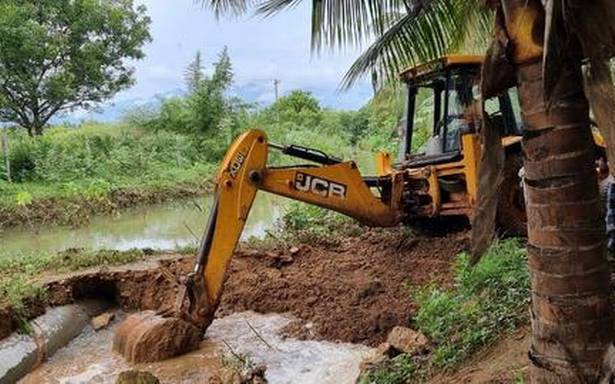
Forty-nine parched irrigation tanks, which had been largely dry for over thirty years due to encroachment of clogged irrigation channels, have now received water from Hanuman River, thanks to Collector V. Vishnu's timely efforts to remove man-made obstacles at numerous locations along the river's 39 km-long watercourse.
After a 30-year hiatus, this enterprise has restarted farming activities on over 10,000 acres. Collector V. Vishnu came up with the proposal, 'Nellai Neervalam,' after touring several dry water bodies – both systematized and non-systematized – around the region in the first week of July (Tirunelveli Water Sources). The goal was to revitalize the ponds and irrigation tanks with public assistance.
In addition to digitizing data pertaining to Tirunelveli district's water bodies, steps have been taken to ensure free movement of water into these irrigation tanks and ponds by desilting uncared for irrigation channels and eradicating unlawful buildings obstructing water movement into these water bodies.
Vishnu personally inspected the entire river course from Senchatti check-dam near Kuththarapaanjaan Falls, its origin point within the Western Ghats, to Panchattikulam, the final irrigation tank of the Hanuman River irrigation system, after learning about the 49 irrigation tanks that do not receive water from the Hanuman River due to clogged irrigation channels and encroachments.
On his orders, a group was formed & commanded by Radhapuram Tahsildar A. Yesurajan, to commence each desilting and eviction effort. Farmers with coconut trees along the watercourse had unlawfully appropriated the river itself in certain places by growing the coconut wood beyond their borders. Windmill firms had unlawfully fashioned temporary roadways throughout the watercourse in a number of different areas, diverting the water.
The desilting of the principal channel has allowed water to flow into 38 of the 49 tanks, which all get water from the Hanuman River. 33 irrigation tanks are currently overflowing as a result of the desilting process, and 5 tanks contain 75 percent water.
“Work on taking water to the remaining 11 irrigation tanks is happening. We’ll make sure the overflowing of all 49 tanks underneath the Hanuman River irrigation system this 12 months by desilting each little bit of the irrigation channels,” stated Yesurajan.
The farmers of the Hanuman River irrigation system are glad now. “All these 49 irrigation tanks have been getting water solely by way of wild streams at any time when it rained closely on this area previously. After 30 lengthy years, this irrigation system has been resurrected by the Collector and his group of officers,” says Murugan, president of Vaeppillankulam village panchayat.
















